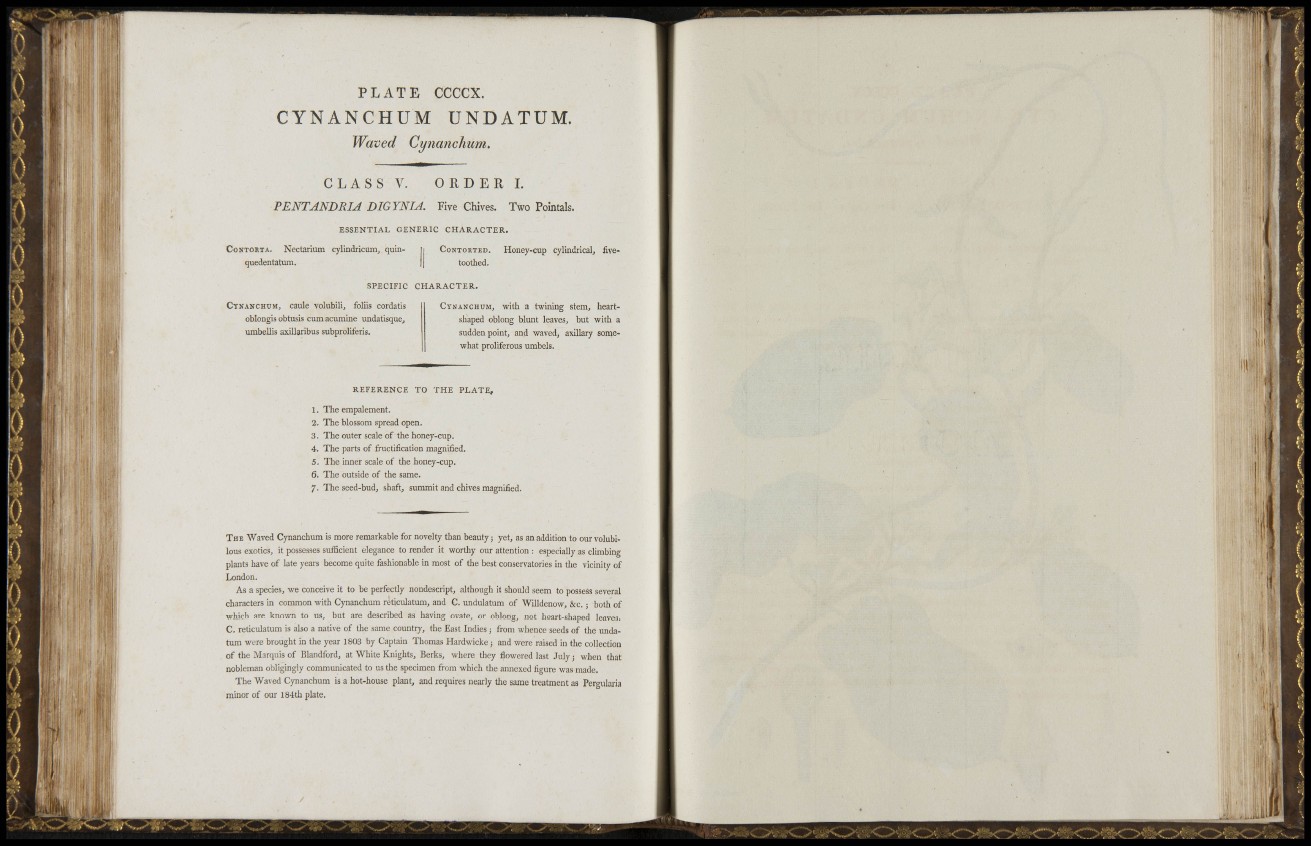
CoNTOKTED. Honey-cup cylindrical, fivetootlied.
CynanchuMj with a twining stem, heartshaped
oblong blunt leaves, but with a
sudden point, and waved, axillary somewhat
proliferous umbels.
REFERENCE TO THE PLATE,
1. The empalement.
2. The blossom spread open.
3. The outer scale of the honey-cup.
4. The parts of fructification magnified.
5. The inner scale of the honey-cup.
6. The outside of the same.
7. The seed-bud, shaft, summit and chives magnified.
T h e "Waved Cynanchum is more remarkable for novelty than beauty; yet, as an addition to our volubilous
exotics, it possesses sufficient elegance to render it worthy our attention : especially as climbing
plants have of late years become quite fashionable in most of the best conservatories in the vicinity of
London.
As a species, we conceive it to be perfectly nondescript, although it should seem to possess several
characters in common with Cynanchum reticulatum, and C. undulatum of Willdenow, &c. ; both of
which are known to us, but are described as having ovate, or oblong, not heart-shaped leaves.
C. reticulatum is also a native of the same country, the East Indies ; from whence seeds of the undatum
were brought in the year 1803 by Captain Thomas Hardwicke; and were raised in the collection
of the Marquis of Blandford, at Whi t e Knights, Berks, where they flowered last July; when that
nobleman obligingly communicated to us the specimen from which the annexed figure was made.
The Waved Cynanchum is a hot-house plant, and requires nearly tlie same treatment as Pergularia
minor of our 184tli plate.
ijvl
„ a Î'